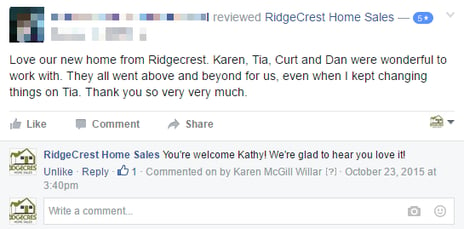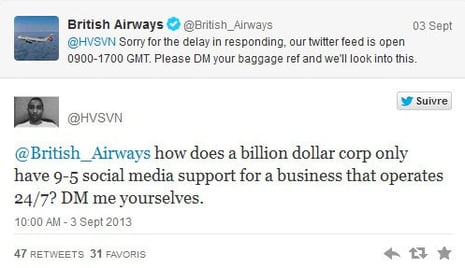If you went to the coffee shop this morning and didn’t post a picture on Instagram, did it even happen? Whether you like it or not, social media has quickly taken over our lives whether you work in social media marketing or not. Everyone now has the power to voice their opinion on any topic at any time on any social media platform, and businesses are under more scrutiny than they were a year ago.
So, what do you need to know to not only survive social media in 2016 but prosper? These 9 things will help you build a better brand on social media.
1. Have a strategy and stick to it
Before you begin posting, sharing, and interacting – it’s important to have a solid, social media strategy in place for yourself and your entire team. Social media strategies can vary in content, but every strategy should have three main components:
- Social media marketing goals
- A plan to reach those goals
- A strong buyer persona
It’s really easy to confuse personal values with brand values when you first begin building your brand on social media. Having a social strategy with these three things will help keep you and your team on track.
Additionally, a social media strategy can save you a lot of time. For example, at Pittsburgh Internet Consulting, our social media strategies also include a monthly posting schedule that includes images, videos, blog posts, etc. Not only does this help us to communicate with our clients, but this saves us time in finding/creating content so we can spend more time analyzing results and improving our social media strategy. In terms of paid advertisements, a social strategy will help you stay within budget.
No matter how familiar you are with the brand, or how successful your social media marketing becomes, you should always, always have a social media strategy in place.
2. Start with 2 – 3 social media outlets
While it seems like every major brand is on every social media channel, don’t think that you need to be. Social media management is not as easy as you may think. It’s best to start with 2 – 3 key social media channels and then analyze your audience further to determine if there is another platform you should be using.
 There are two social media channels that most businesses use – Facebook and LinkedIn. However, analyzing your buyer personas before you decide on which social media platform you want your business to be present on is the best idea. For instance, a restaurant may benefit from a Facebook page, but may not find value in the more professional setting of LinkedIn. However, certain B2B businesses may be able to connect with their audience on LinkedIn than the largely B2C community of Facebook.
There are two social media channels that most businesses use – Facebook and LinkedIn. However, analyzing your buyer personas before you decide on which social media platform you want your business to be present on is the best idea. For instance, a restaurant may benefit from a Facebook page, but may not find value in the more professional setting of LinkedIn. However, certain B2B businesses may be able to connect with their audience on LinkedIn than the largely B2C community of Facebook.
This is where your social strategy can help you. Analyze your buyer persona (target market) and determine where they are finding their information and going for enjoyment. Then, consider your brand and your products – what social media channel do you believe will most effectively encourage your audience to buy your products or services?
Here’s a quick breakdown of the characteristics of each social media channel and the demographics of those on these channels:
- Facebook: 62% of all adults have a Facebook page, with the majority of those adults in two age ranges – 18-29 and 30-49. Facebook is a more casual environment where users go to update their loved ones about their lives, state their opinions on a variety of topics, and find information about (largely B2C) businesses.
- LinkedIn: LinkedIn is, very simply, a professional network where business professionals can share ideas and news, find employment, and B2B companies can connect with potential customers. It also goes a long way in establishing yourself and your brand as an expert in your industry.
- Twitter: Twitter is more prominent in Urban areas and is great for companies who benefit from updating their audience in real-time. About 30% of Twitter users are under the age of 50.
- SnapChat: SnapChat is a much newer social media platform with the majority of users being teenagers and young adults. However, with recent updates, SnapChat is establishing itself as a great branding tool for many industries. Recently, it’s been called an “everything app.”
- Pinterest: 26% of adults use Pinterest – with a large majority being middle- to upper-class women under the age of 50. Event planners, interior designers, and similar industries should definitely have a Pinterest Account. It’s basically an online scrapbooking app.
- Instagram: As a photo sharing app, businesses who rely heavily on the appearance of their products (retailers, photographers, etc.) should make an effort to become a force on Instagram.
- YouTube: YouTube is great for a large variety of businesses. If your business benefits from posting how-to videos, podcasts, or similar videos, you should definitely have a YouTube channel. However, anyone who is determined to establish their expertise on a subject can benefit from a YouTube channel.
3. Put money into social media advertising
While it’s not always necessary for businesses to run paid advertising on social media, it is recommended to increase brand visibility and reach potential buyers. Dedicating as low as $50/month to paid advertising will go a long way to increase your brand awareness and get your products in front of the most likely buyers.
With most social media advertising, you have thousands of different combinations of demographics you can set to reach your audience. Though Facebook is the most largely advertised social media channel (with the possible exception of YouTube), there are a lot of benefits to advertising on most social media platforms.
Pinterest has both engagement and traffic campaigns you can create using specific boards and pins on your account. Twitter has several different types of campaigns you can select (e.g. website conversions) and demographics you can target similar to Facebook.
When choosing what social media accounts your business needs, take a look at the advertising abilities on that platform to be sure the targeting and campaign options meet your needs.
4. Clearly state and demonstrate your brand’s values
Things like the company’s values (e.g. makeup brands who are cruelty-free are more favorable), the brand’s volunteer/charity involvement, and their willingness to please consumers are crucial to highlight on social media. Why are brand values being called into question so much in the past several years?

A survey says that 62% of millennials claimed that they are more likely to continue buying from a brand that engages them online than a brand that does not. What do millennials have to do with brand values? Currently, in the United States, millennial spending totals $600 billion every year – and values matter to them.
Though media coverage and the transparency of business practices – thanks to the internet – have much to do with this emphasis on brand values, millennial buyers are reason enough
5. Have a consistent posting schedule
Just like blogging, you need to have a relatively consistent posting schedule for an effective social media marketing plan. The difference is, with blogging, it is encouraged that you stick to a strict day – and time, if possible – that you publish a new post or video. With social media updates, when you post isn’t as important as how much you post.
The recommended amount of posts per day varies depending on your business, your target audience, and the social media channel you are using. It’s important to consider your social media channel especially, because like urban areas, suburbs, and rural communities, social media channels have completely different demographics. Things such as age, population, gender, and industry can be drastically different on each platform and you want to make sure you are posting at the frequency, the voice, and on the topics that those audiences are looking for.
Generally, your social media schedule should include this many posts per day, broken down by platform:
- Facebook: 2 - 3
- Twitter: 3 – 5
- Pinterest: 5 – 10
- LinkedIn: 1 – 2
- Instagram: 1 – 3
To clarify – even though Facebook is the most popular and the best social media platform for businesses to get their start, it is not meant as a “real-time” social media app. This means that unlike Twitter, Pinterest, SnapChat, and even Instagram, Facebook is meant for posting and sharing information at a much slower pace.
For example, with Twitter you can update your followers on an event or hold a Q&A session in real time directly on your timeline. With Facebook, news is shared more slowly and is visible on yours and your followers’ timeline for longer periods of time. Of course, businesses can choose to post more often on Facebook, but pay attention to the engagement levels of your audience and the amount of followers you have on your page. If the amount of posts is negatively effecting engagement and page likes consider posting less.
6. Hashtags = Keywords
No matter how annoying you think hashtags are, I can tell you that they are very beneficial to your social media strategy. Here’s a brief history of how the pound sign turned into The Hashtag:
 Twitter didn’t invent the hashtag, but it did get its start on the popular social media platform. The hashtag began organically when Twitter users decided that they wanted a way to find information similar to a Tweet they had seen or posted. For example, if you saw a tweet about the presidential election, and you wanted to see similar tweets, you would use/search for the hashtag #2016PresidentialElection. Eventually, Twitter, Instagram, Google+, Pinterest and even Facebook adopted the hashtag as an easy way for their users to find and share information.
Twitter didn’t invent the hashtag, but it did get its start on the popular social media platform. The hashtag began organically when Twitter users decided that they wanted a way to find information similar to a Tweet they had seen or posted. For example, if you saw a tweet about the presidential election, and you wanted to see similar tweets, you would use/search for the hashtag #2016PresidentialElection. Eventually, Twitter, Instagram, Google+, Pinterest and even Facebook adopted the hashtag as an easy way for their users to find and share information.
Though hashtags are important, it’s equally important that you not use too many of them. On Facebook, use hashtags very sparingly – 2 to 3 per post – but on Instagram and Twitter, using more hashtags is acceptable as long as they are relevant.
Think of hashtags as your keywords when optimizing your website. You want to research (through the social media channel’s search engine) several things:
- WHAT terms related to your business are being searched?
- WHO is searching for this term – is this your target audience?
- HOW OFTEN is this term being searched – will you end up gaining any traffic from this term?
- What is the PERCEPTION of the term – is it being used in a widely negative or a widely positive fashion?
So, if your product relates to The Pittsburgh Steelers, you would probably want to include the hashtags #Pittsburgh, #PittsburghSteelers, and #NFL.
7. Analyze your social media and your competitors
If you don’t keep track of your own analytics, how will you know what’s working and what’s not? You should be checking your analytics at least once a week to make sure you’re on track to beat your performance from the previous month/year.
At Pittsburgh Internet Consulting, we use both Google Analytics and the analytics provided on each social media platform to compile our reports. There are other social media posting/reporting/analyzing platforms you can use to monitor all of your accounts in one place, but Google Analytics and the individual analytics on each of your accounts should serve you well if you’re just getting your start.
When analyzing your page, it’s important to keep a close eye on the following things:
- What website pages your fans/followers are navigating to from your page
- What specific posts are leading to transactions or goal completions
- What types of content they are most frequently engaging with
- What your competitors are doing
The first two go hand-in-hand in most ways. All digital marketing, including social media marketing, is aimed to sell your product or service and increase brand awareness. You want your social media fans and followers to eventually purchase something – but that doesn’t necessarily mean that they are going to navigate from your social media page to a product page on your website and purchase something right away. But you want to move them through the buyer’s journey and analyze what pages they are navigating to and what posts are leading them along the buyer’s journey.
You want to know what types of content – video, blog posts, images, etc. – that your audience enjoys. Obviously, the more they enjoy a post, the more likely they are to complete a conversion or, at the very least, engage with a post. Certain audiences appreciate certain content over others. For example, if you are a B2B business, your audience may appreciate an informative video or a case study over a lengthy blog post so they can digest the content in a shorter amount of time.
Finally, analyzing your competitors allows you to compare your social media strategy to theirs. If they are performing better than you are on a social media platform, you can change your strategy and make it more effective. Likewise, if your competitor is doing poorly, you are able to learn from their mistakes and refrain from repeating them.
8. Engage with your audience
Audience engagement helps you build a relationship with your target audience. In 2016, it’s more important than it’s ever been to have a relationship with your audience that exceeds a business-to-consumer relationship.

Engaging with your audience includes responding to comments and posts on your page, retweeting customer mentions and thanking them for their business, and answering private messages in a timely manner. However, when engaging with your audience, you also have to be prepared to deal with negative feedback as well.

How you respond to all feedback depends heavily on your brand and the level of positivity or negativity in the consumer’s statement. Taking negative feedback to a private message format or asking for an email address when responding is usually the best way to go about handling the situation, but what is important is that you don’t ignore it.
9. Have a social media clause
Unfortunately, one of the negative side effects of social media is also one of the things we love most about it. The ability to state your opinion on any topic, at any time, or sharing a piece of information or opinion based article has been known to end careers and run brands into the ground.
Recently, Pittsburgh residents were shocked at a statement posted by Wendy Bell on her public WTAE Facebook page. After a few days, the station released Wendy Bell from her position at the popular news station stating that, “Wendy’s recent comments on a WTAE Facebook page were inconsistent with the company’s ethics and journalistic standards.” Despite individual beliefs of whether or not her comment crossed some sort of line, WTAE assumedly had a social media clause in her contract that she violated with her statement and the station had no choice but to release her.
Having a social media clause in your employment contracts and making your team aware of this clause and the repercussions for violating it can save you a big headache in the future. Remind your team that no matter how true or how much they believe in their opinion or that a piece of information they are sharing is correct, if it doesn’t positively reflect the brand and those employed by the brand, they must be cognitive of their actions at all times.
